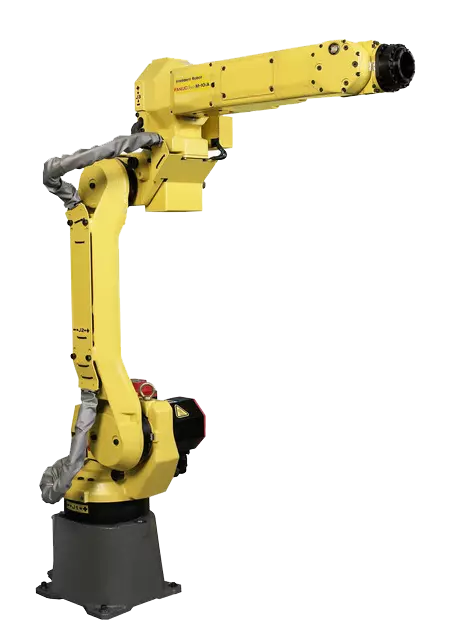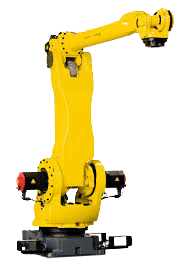The Differences Between Robotic Cutting Applications
Although cutting applications are relatively new to the robotic world, technological advances are helping to rapidly expand these application types. There are several robotic cutting applications types to choose from, with each one having its own unique features. It is important to understand the differences between each in order to choose the type that best fits the requirements of any given cutting process.
Robotic Cutting Application Types
- Plasma Cutting - Plasma welding robots, such as the FANUC Arcmate 120ic, are also capable of completing plasma cutting applications. During this process the jet of plasma produced from a welding power supply is accelerated to a faster rate in order to separate metals instead of welding them. Plasma cutting robots can cut through both thin and thick metals that are electrically conducive including: steel, stainless steel, aluminum, brass, and copper. Plasma cutting robots help to reduce cycle time as this cutting application tends to be one of the fastest ones, with cuts of up to 500 inches per minute being produced.
- Oxyfuel Cutting - Oxyfuel cutting robots like the ABB IRB 2600/20, are integrated with torches that use fuel gases to melt workpiece metals. When these workpiece metals melt a pool of slag forms and a powerful jet of oxygen is then directed to the workpiece, pushing through the slag to create a cut. This application is best for thick metals that contain some amount of iron. Oxyfuel industrial robots can cut through metals with thicknesses of 50mm or greater. However, due to the cutting of thick metals this tends to be a slower cutting process than other types. The longer and thinner torches integrated with oxyfuel robots allows access to workpieces that are hard to reach or in tight spaces.
- Waterjet Cutting - 6-axis robots, including the FANUC M-20ia, are commonly used to complete waterjet cutting applications. These robots are integrated with EOAT that produces an ultra-high-pressured jet of water that when applied to a workpiece wears away material to produce a cut. Waterjet cutting is capable of cutting more than just metal workpieces. Plastics, composites, and textiles can be cut through with the use of just plain water. While tougher materials such as steel, aluminum, and stone need the addition an abrasive to the waterjet to complete a cut. This process is best for applications that require a clean work environment since no dust or smoke is produced, unlike other types of robotic cutting. Clean, even cuts are made with no heat affected zone (HAZ), protecting the workpiece from becoming damaged.
- Ultrasonic Cutting - For ultrasonic cutting applications robots are integrated with cutting instruments that use ultrasonic energy to separate materials. Ultrasonic robots, such as the Motoman HP20, offer versatility with the capability of cutting both soft and hard materials including: rubber, plastic, foam, and pipping. The blunt edge of the cutting instrument produces a fusion effect that results in precise, clean cuts with very little heat emitted.
- Laser Cutting - During laser cutting applications robots like the long reach ABB IRB 4400-L30 focus a laser beam to workpieces in order to melt them and create a separation. This is a non-contact cutting method that is capable of producing fast cuts for both 2D and 3D workpieces. Laser cutting robots are most commonly used to separate plate-shaped materials including paper, wood, and metal.
Robots Done Right is the place to start when it comes to used robots. Contact us if you are interested in buying or selling your used robot.




